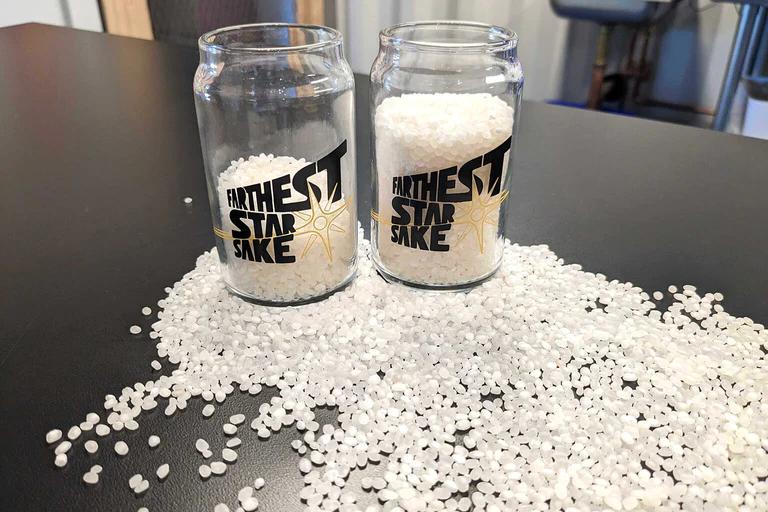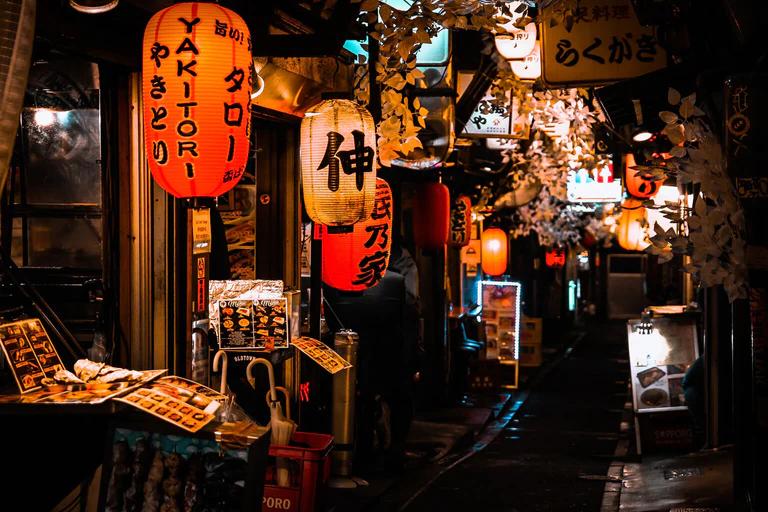The fascinating world of Asian spirits is still somewhat unexplored in the West. It’s located somewhere on the hazy horizon of consumers’ awareness, but full understanding of what beverages such as sake, shochu and soju really are is still lacking for many. But that’s OK! We’re here to change that.
So what’s the difference between sake, shochu and soju? There are two major differences: Firstly, two of these drinks are Japanese and one is Korean; secondly, two are distilled and one is fermented. Let’s explore these and other differences — and similarities — when it comes to sake versus soju versus shochu.
What is sake?
Sake is a national beverage of Japan. It’s literally called “Nihonshu”; “Nihon” meaning Japan, and “shu” meaning alcohol. It’s an alcoholic beverage that is fermented from rice using koji, a beneficial mold that turns rice starches into sugar. Other ingredients include water, yeast, and sometimes brewer’s alcohol. Sake has been produced in Japan for more than 2,000 years!
Sake’s ABV can range between 1% and 22%, with an average of 15% or 16%. Depending on the type, it can be served over ice, cold, room temperature, warm or hot. Like wine and beer, sake is meant to be sipped and savored, not taken quickly as a shot. Sake offers an incredible variety of taste experiences, as any choice made during the brewing process can affect its final flavor. (It’s even said that there are 10,000 ways to make sake.) There is a wide spectrum of possible tasting notes, such as fruity, floral, nutty, lactic and more!
What is soju?
Soju is a distilled beverage from Korea. Interestingly, it is the world’s bestselling alcohol; Jinro Soju, specifically. Its history reportedly dates back to the Mongol invasion of Korea in the 13th century, as the invading forces brought the distilling technique with them. Like sake, soju can also be made from rice, although other foods such as wheat, sweet potato, tapioca and barley can also be base ingredients for soju.
Soju is often described as a Korean vodka because it is a fairly neutral spirit, but it usually tastes a bit sweeter than vodka. It is typically enjoyed chilled or at room temperature, but can be served warm as well. People often drink soju neat alongside beer — not unlike a sake bomb!
Being a liquor, it is stronger than sake, but not by much; the typical ABV of soju is between 20% and 24%. Unlike sake, there are no strict rules about what can and cannot be used to make soju. For example, the top soju producer, Jinro Soju, makes various flavors such as strawberry, grape and peach. Sake can be flavored naturally with fruits, but at that point it is legally no longer sake.
What is shochu?
Shochu and soju sound extremely similar, as far as pronunciation is concerned. However, shochu is a Japanese spirit, whereas soju is a Korean spirit. But they do have things in common, such as the fact that they can be made from the same base ingredients of rice, barley and sweet potato. Additionally, shochu can be made from brown sugar. Like Korean soju, Japanese shochu is a distilled liquor, and its ABV is generally between 20% and 30%, though it can be as high as 45%.
The Japanese government has more stringent regulations for shochu — especially “honkaku” shochu (literally, authentic shochu) — than Korea has for soju. While some shochu does have a vodka-like taste, honkaku shochu is also known for more rich, robust, savory flavors.
Sake, soju and shochu: The key differences
Now that we’ve introduced each beverage, let’s directly compare the differences between soju, sake and shochu.
Origins
It’s interesting to note that while Japan has stricter rules surrounding shochu, it is actually the younger of the two liquors, with its Korean counterpart having been introduced a few centuries earlier. The distilling techniques required for making soju were introduced by the Mongols who invaded Korea in the 13th century, whereas shochu production didn’t begin in Japan until the 15th or 16th century. Sake beats out both shochu and soju by at least 1,500 years, as it is generally thought that sake production began shortly after the advent of rice cultivation in Japan.
Ingredients
Sake can only be made from rice, but both shochu and soju can also be made from a variety of other foods, such as sweet potato and barley. The Japanese drinks of sake and shochu are both made using koji mold; mainly yellow koji for sake, and black and white koji for shochu. (However, some sake breweries have been experimenting with other types of koji, such as Imada Brewing Company, who uses a touch of white koji to achieve a distinct acidity in Fukucho “Seaside.”) On the other hand, soju is made with various wild/ambient fungi.
Alcohol content
Sake can be relatively high in alcohol percentage compared to other fermented beverages. With an upper limit of 22% and an average of 15%-16%, sake typically surpasses both beer and wine in alcohol content. Still, distilled beverages like soju and shochu are higher, falling in the realm of 20%-45%.
Brewing process: fermentation vs distillation
The reason distilled spirits are stronger than fermented ones lies in the name itself; the alcohol has been distilled to an even greater concentration, making it more potent. It’s this extra step that separates sake, beer and wine from hard liquors such as whiskey, soju and shochu. (Sake itself is the result of a unique brewing process called multiple parallel fermentation. Learn more about the differences between sake and wine.)
Taste
One might be tempted to assume that because sake can be made with only rice, there would be a much more limited spectrum of tastes as compared to soju or shochu, which can be made from a variety of foods. But that’s not true! Water source, rice type, yeast strain, and the intentional omission of certain steps in the brewing process can yield many different flavor profiles, from fruity and floral to rich and earthy.
Of course, the most notable difference in taste between sake, soju and shochu is the intensity of the alcohol. Some soju and shochu can taste rather neutral, similar to vodka. Other types can have fruit notes — and in the case of soju, added fruit flavors — or possess a more robust, toasted taste. For instance, shochu made from orange sweet potatoes can have a fleshy fruit or vegetable flavor, like papaya or squash. On the other hand, shochu made from barley really carries that roasted barley flavor.
Each drink is a world of its own
What’s truly amazing is that each drink represents an entire culture. Not only do they taste delicious, but they tell stories. Sake, soju and shochu tell the histories of their respective countries and their people, stretching back centuries. By learning about sake, for instance, one can come to understand the discipline, skill and passion of the people who make it, as well as how that reflects larger cultural values. In your tiny “ochoko” (sake cup), the still, clear “water of the gods” beckons calmly, asking you to enjoy the moment and savor all that came before.
Resources
Bhattacharjee, A. “Jinro Soju - World's Best-Selling Spirit.” Bartender Spirits Awards, 2023.
https://bartenderspiritsawards.com/en/blog/spirits-reviews-2511/jinro-soju-worlds-best-selling-spirit-502.htm
Graham, H. “Soju: Beyond the Green Bottle of Korea’s Iconic Spirit and the Future of Craft.” DRiNK, 2021.
https://www.drinkmagazine.asia/2021/10/14/soju-beyond-the-green-bottle-of-koreas-iconic-spirit-and-the-future-of-craft/
Hines, N. “Soju: Everything You Need to Know About Korea’s National Drink.” VinePair, 2022.
https://vinepair.com/articles/soju-koreas-national-drink/
Iijima, Anna Lee C. “Shochu vs Soju: A Quick Guide.” WineEnthusiast, 2022.
https://www.winemag.com/2022/03/22/shochu-vs-soju/
“Honkaku Shochu and Awamori.” Japan Sake and Shochu Makers Association, 2014.
https://www.nrib.go.jp/English/sake/pdf/guidesse02.pdf
“The History of Shochu.” Japan Sake and Shochu Makers Association.
https://honkakushochu-awamori.jp/english/basic/history-of-shochu/















